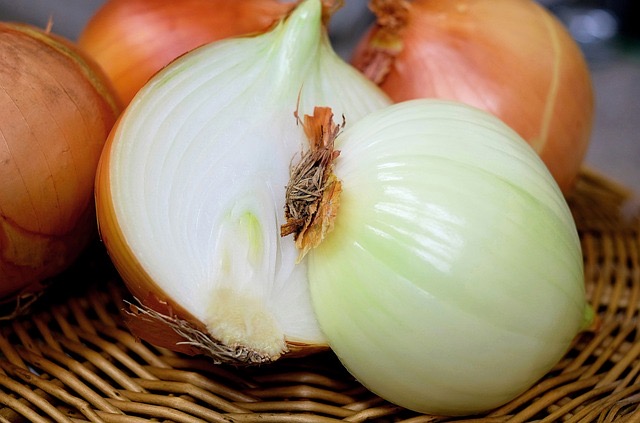The age-old question of how to chop onions without shedding a tear may finally have a scientific solution—courtesy of a physics lab at Cornell University. While countless kitchen hacks promise tear-free slicing—from freezing onions to donning goggles or biting bread—new research shows that the real key lies in your blade and your technique.
According to a newly released preprint study from physicists at Cornell, using a sharper knife and cutting at a slower pace can significantly reduce the onion’s eye-watering effects. The team’s experiment involved a miniaturized guillotine equipped with steel blades of varying sharpness and electron microscope precision.
The Science Behind the Tears
The culprit behind onion-induced crying is a volatile chemical called syn-propanethial-S-oxide, which is released into the air as a fine aerosol when the vegetable’s sulfur-rich tissues are disrupted. Once airborne, the compound can quickly find its way to your eyes, triggering a stinging reaction from your tear ducts.
To understand the physics of this phenomenon, the Cornell team coated onion wedges in black spray paint (to track deformation), then used blades ranging from 5 to 200 millimeters in tip width to slice them at speeds between 1.3 and 6.5 feet per second. The results were striking.
Sharper Blades, Fewer Tears
The researchers observed that dull blades caused the onion’s skin to bend before cutting, storing energy like a spring. When the blade finally broke through, the built-up pressure released an explosive burst of juice, sending high-speed droplets into the air. These microscopic droplets—some reaching speeds of 141 feet per second—fragmented in flight, creating a fine mist that spreads the eye-stinging compound more widely.
In contrast, sharper blades sliced cleanly, minimizing pressure buildup and resulting in up to 40 times fewer droplets. Moreover, the speed of cutting also mattered: faster slicing produced up to four times more particles than slower motions.
A Modern Solution to an Ancient Ingredient
Onions have been a culinary staple since at least 3000 BCE, with Ancient Egyptians placing them in tombs as symbols of eternity. Today, they’re prized not only for flavor but for their nutritional and antibacterial benefits. Yet, the eye irritation they cause has remained a universal kitchen nuisance—until now.
While the study is still awaiting peer review, the findings suggest a straightforward strategy for onion preparation: keep your knife sharp and take your time. That may not win you a Guinness World Record (currently held at 21.69 ounces of onions peeled and sliced in one minute), but it will keep your eyes dry.




